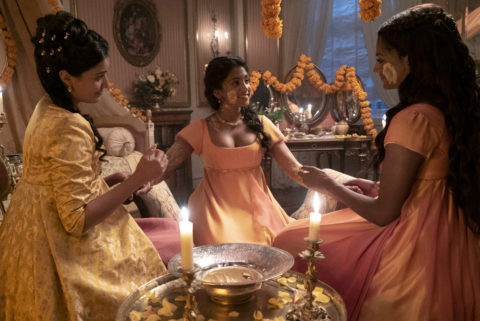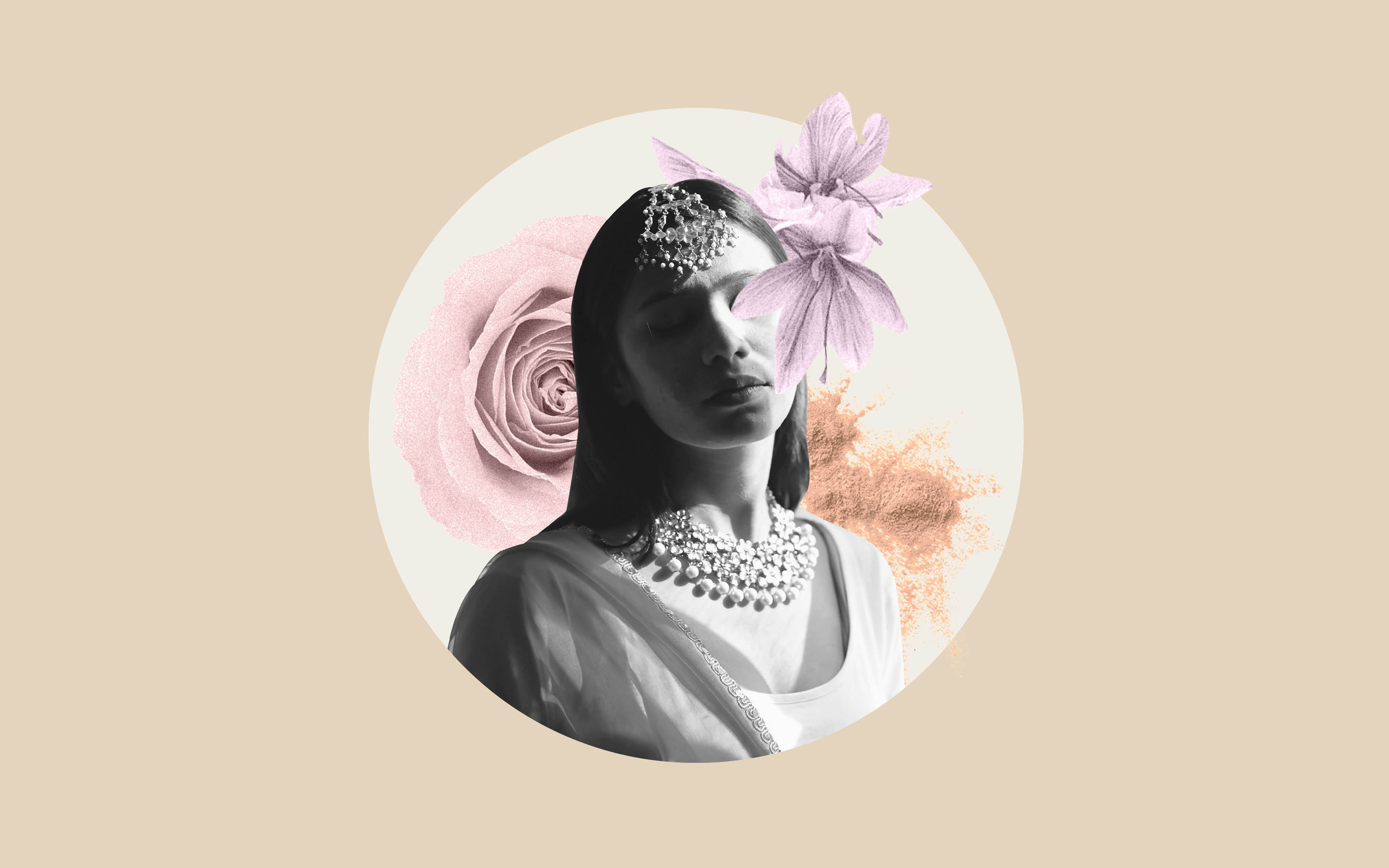For Asian Heritage Month, beauty and culture commentator Meera Solanki Estrada discusses overcoming beauty standards and the power of representation.
As an on-air culture commentator, I often get to watch films and TV shows before they’re released to the public. Admittedly, I’m a little choosy with what I spend my time watching. But when a preview for season two of Netflix’s Bridgerton became available, I cleared my schedule and binged all eight episodes in two days flat. I had seen the trailer and posters and was eager to watch Kate and Edwina Sharma join the regal affair that is the Ton’s courting season. And when the credits rolled on the final episode, I desperately wanted to talk to my South Asian friends — heck, I wanted to talk to the entire world about the Sharma sisters.
In all my 43 years, I’d never seen such a display of beautiful, dark-skinned South Asian representation on an American series — strong, smart, confident women with gravitas that also looked like me. So many moments between the sisters resonated, from the tender hair oiling scenes to the poignant bangles scenes. But for many South Asians, both in the diaspora and within India itself, seeing the haldi (turmeric) ceremony — set to the music from the 2001 iconic Bollywood hit film Kabhi Khushi Kabhi Gham — stirred up a plethora of emotions. I vividly remember my own haldi ceremony (a pre-wedding ritual). Never did I imagine I’d see it in mainstream media, let alone on Netflix’s most-watched English-language show ever. And while some people nitpicked at certain inconsistencies and inaccuracies in the second season that muddled various Indian languages and nuances, I chose to look past that, enamored by the beauty of the bigger cultural moment.

We throw the phrase “to be seen” around a lot. But when it actually happens, it strikes a powerful chord. And I felt seen.
Watching Bridgerton reminded me of my childhood. I didn’t see myself in mainstream media, but interestingly, I didn’t see myself within my own Indian culture either. A casualty of colonization, Indian beauty ideals demand a lot. Fair skin and large almond eyes (the lighter, the better); A big bosom and a tiny waist. You should be tall, but not too tall to dissuade potential suitors, with long, thick hair (and no body hair in sight). Of the countless grainy, bootleg Bollywood flicks I watched with my parents, I never once saw a dark-skinned female lead. I remember how insecure and inadequate I felt as a teen. I was a short, darker-skinned girl with a far from flat tummy, thick bushy eyebrows and upper lip hair most pubescent white boys my age would envy. I was also up against the supermodel era of the ’90s, which taught me that beauty meant blonde hair, blue eyes and a towering stick figure-like silhouette. In every unrealistic beauty category, it seemed I was falling short.
Sadly, colourism and outdated beauty ideals haven’t changed much in Bollywood or in the western world. But what did change for me was a trip I took to India at 18 years old.
My parents come from humble beginnings in Gujarat, India. Before immigrating to England and then later to Canada in the early ’80s, they experienced significant hardships and wanted me to have a glimpse into their childhoods. Whilst visiting small towns and villages there I saw firsthand the beauty rituals revered by the women of my family. I watched as everyone from young girls to grandmas as old as 90 sat casually on their porches, oiling and massaging their hair and scalps. I saw aunts make various homemade concoctions of milk and honey, or rosewater and turmeric, to soothe, soften, smooth or brighten the skin. I felt beautiful with a bare face for the first time — surrounded by women who seemed to appreciate a deeper meaning of beauty I hadn’t experienced before. Outside the glitz and glam of cities like Mumbai, the pressure to conform fell away in favour of nurturing the family unit and, in turn, inner beauty.
Later, in my 20s and 30s, I was inspired to learn more about ayurvedic practices and the delicate balance of the mind, body and spirit connection to achieve optimal health, wellness and cultivate beauty from within. This return to my roots helped me to reclaim beauty for myself.
Now I appear regularly on TV as a beauty and culture personality, and I’m fortunate to share many of my traditional Indian beauty rituals on a national scale with both Asians and non-Asians. From discussing topics like facial massaging with a kansa wand to hair and body oiling and the various beauty benefits of traditional ingredients like saffron, turmeric and gooseberry, I feel joy in sharing the practices that bring me joy and make me feel beautiful. There is something that feels so natural and authentic in merging my passions for beauty and culture (which are so intricately linked) to share regimes that are accessible to all.
Unfortunately, Bollywood has become even more Eurocentric in its beauty ideals over the years. The porcelain-like skin and tiny waistlines portrayed on screen are increasingly unattainable for the majority of the people living in India and those of us living abroad. So, I’m thrilled to see so much more exposure to real Indian beauty with shows like Bridgerton and Never Have I Ever. Plus, we have stars such as Mindy Kaling, Priyanka Chopra Jonas, Lilly Singh and others showcasing our culture with grand Diwali parties and cultural celebrations worthy of headlining magazine covers and entertainment shows around the globe.
But when I step back, who I really admire are all those women I met at 18, like my mother, aunts and the many women in India who reclaimed Indian beauty for themselves far before it was trending on social media. Like them, I hope to inspire everyday Asians to have pride in our roots, and to experience the joy in expressing our culture through beauty rituals. Because we are all beautiful, we just need to see it.
